Symbols of New Zealand (With Images) – Symbol Sage
Symbols of New Zealand (With Images)
Mục Lục
Symbols of New Zealand (With Images)
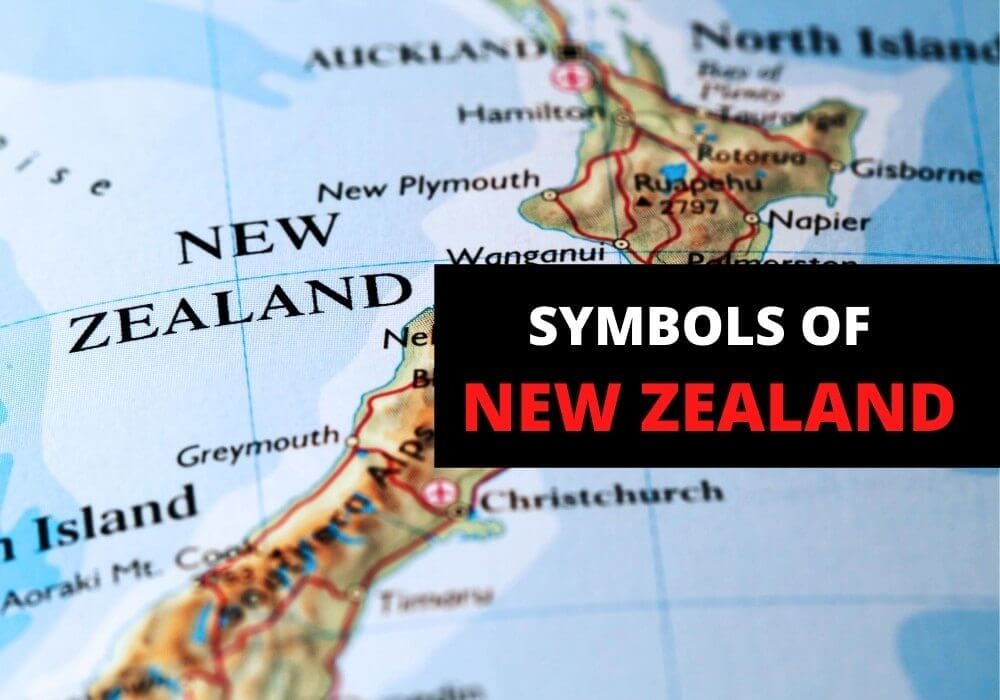
Affiliate Disclosures
A beautiful country comprised of two main islands, New Zealand lies in the southwestern region of the Pacific Ocean. The country is known for its culture, stunning landscapes, natural landmarks, biodiversity, outdoor adventuring, and for being home to Middle Earth. Here’s a look at the national official and unofficial symbols of New Zealand and what makes them so special to New Zealanders.
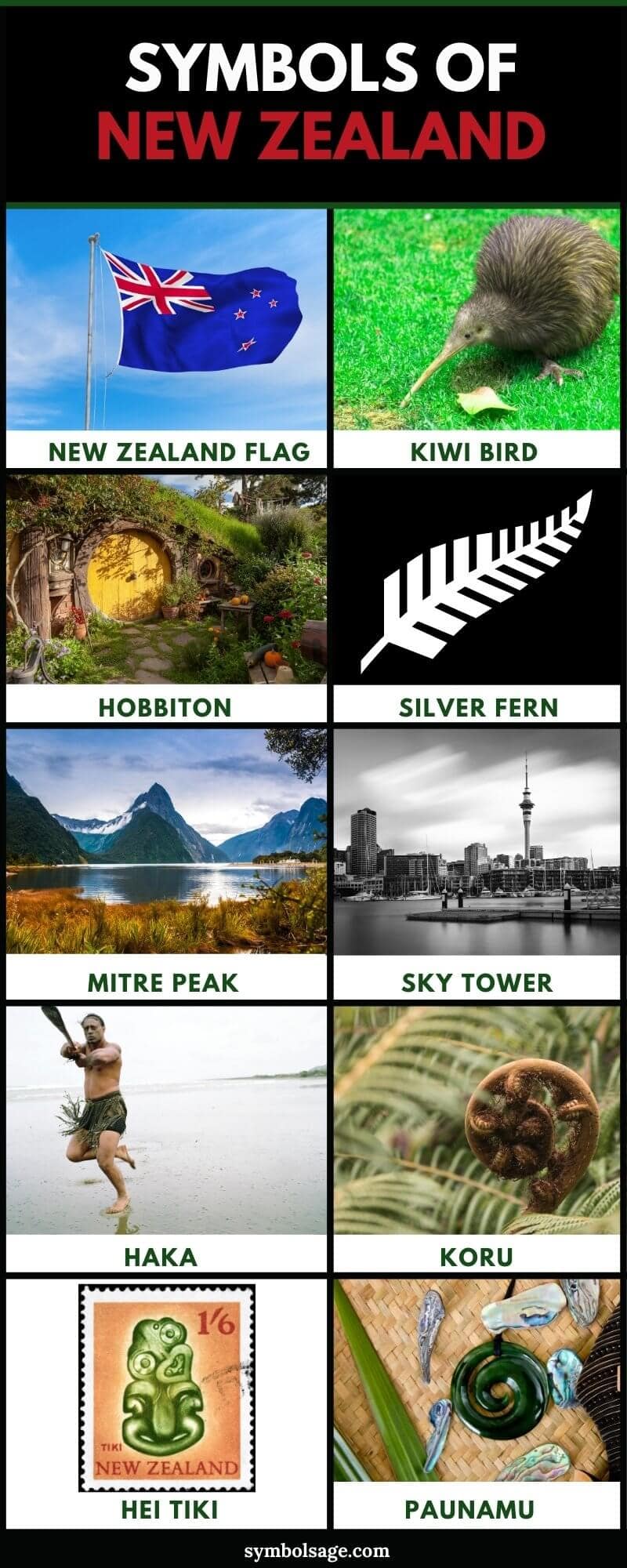
- National Day: Waitangi Day on the 6th of February to commemorate the signing of the Treaty of Waitangi – the founding document of New Zealand
- National Anthem: God Defend New Zealand and God Save the Queen
- National Currency: The New Zealand dollar since it was introduced in 1967
- National Colors: Black, silver/white and red ochre
- National Plant: Silver Fern
- National Flower: Kowhai
- National Animal: Kiwi
National Flag of New Zealand
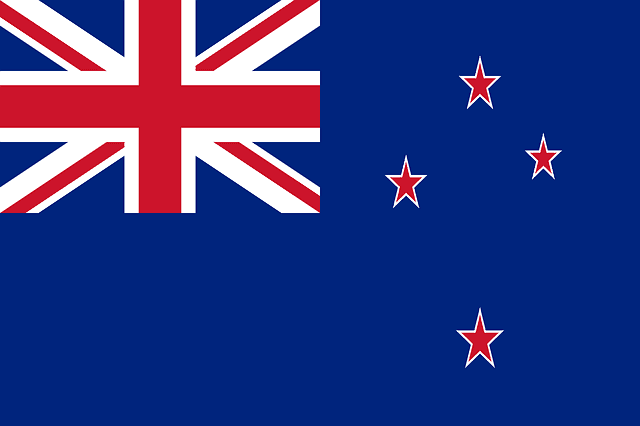
The flag of New Zealand is a symbol of the people, the realm and the government, with several elements superimposed on a royal blue field, a British Blue Ensign. The Union Jack in the first quarter of the flag, represents the historical origins of New Zealand as a colony of Great Britain. On the opposite side are four stars of the Southern Cross which emphasise the location of the country in the South Pacific Ocean and the blue background represents the sea and sky.
Although the current flag of New Zealand has been used extensively since 1869, it was formally adopted as the national flag of the country in 1902. Before that, there were many different designs of the flag, including those with white and red ensigns. In 2016, the New Zealanders decided to vote on their flag for the first time and from the two options that were available they chose the Silver Fern design and the current national flag, which was the obvious favorite among the people.
Coat of Arms of New Zealand
The design of the New Zealand Coat of Arms represents the nation’s bicultural history with a Maori chief on one side of a central shield and a female European figure on the other. The shield consists of several symbols which represents New Zealand’s agriculture, trade and industry while the crown on top symbolizes the status of the country as a constitutional monarchy.
Up until 1911, the New Zealand coat of arms was the same as that of the United Kingdom. The current version of the Coat of Arms was adopted by Queen Elizabeth II back in 1956 and while its official use is restricted to the government of New Zealand, the symbol is used on the national passport and police uniforms. Symbolic of national sovereignty, the coat of arms is featured on all the Acts of Parliament, also in use by the Prime Minister and the Supreme Court.
The Hei-tiki
The Hei-tiki, an ornamental pendant worn by the Maori people of New Zealand, is usually made from Pounamu (described below) or jade, plastic and other materials. Hei-tiki represents two things – either Hineteiwaiwa, the goddess of childbirth or one’s ancestors. They’re traditionally passed on from parents to children or used for good luck and protection.
In marriage, Hei-tiki pendants were commonly given by the family of the husband to the bride to bring fertility and help her conceive. When the wearer of a hei-tiki died, some Maori tribes buried it and later retrieved it in times of grieving. They would then hand it down to the next generation to be worn and this is how the importance of this pendant gradually increased.
Hei-tiki pendants are still worn today, not only by the Maori but by people from various cultures as a talisman of good fortune and protection.
The Kiwi Bird
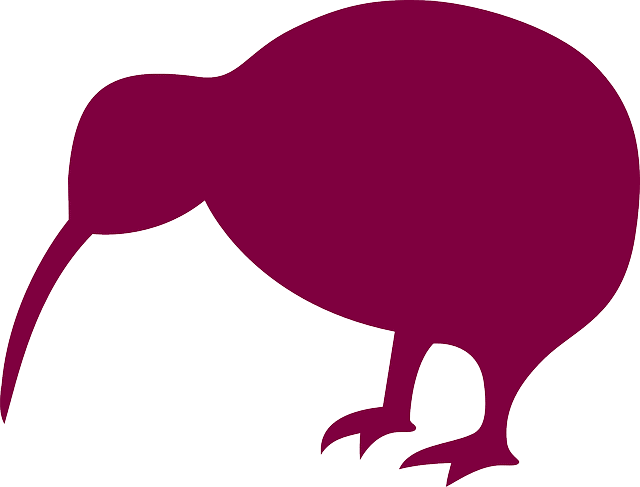
The Kiwi (meaning ‘hidden bird’ in the Maori language) was chosen as the national bird of New Zealand in 1906 and is the only bird in the world which doesn’t have a tail. During evolution, the kiwi lost its wings and was rendered flightless. When compared to other birds it has a keen sense of smell but slightly poor vision and feeds on both plants and small animals.
Native to New Zealand, the Kiwi was first used as a symbol in the mid-nineteenth century when it was featured on regimental badges and during WWI, the word ‘Kiwi’ was used for New Zealand soldiers. It caught on and now it’s a well-known nickname for all New Zealanders in general.
The Kiwi symbolizes the uniqueness of the country’s wildlife as well as the value of its natural heritage. To the New Zealanders, it’s a symbol of endearment and pride. However, this defenceless bird is currently under the threat of extinction due to habitat fragmentation, loss of natural resources and pollution which is crucial for its survival.
The Silver Fern
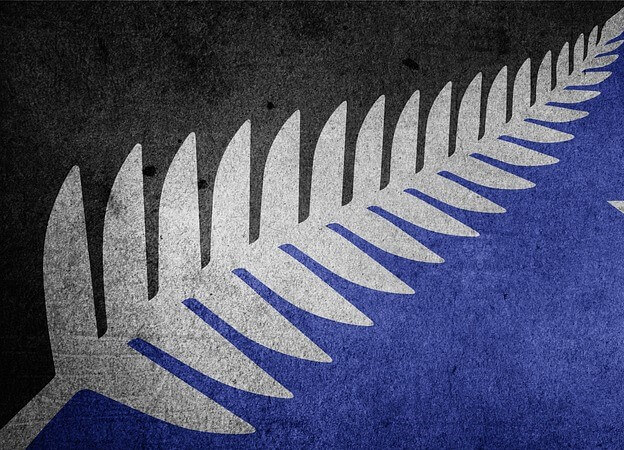
The silver fern is one of the most well-known symbols of New Zealand since the 1880s, when it was first accepted as a national icon. The Maori view it as a symbol of strength, enduring power and stubborn resistance whereas to the New Zealanders of European descent, it signifies their attachment to their homeland.
Endemic to New Zealand, the silver fern is featured on several official symbols including the $1 coin and the country’s coat of arms. Most of New Zealand’s sports team such as the All Blacks (the national rugby team), the Silver Ferns and the cricket team feature the fern on their uniform. In fact, it’s the leading symbol of rugby, the national game of New Zealand, after which the colors black and white became the national colors of New Zealand.
Pounamu (Greenstone)
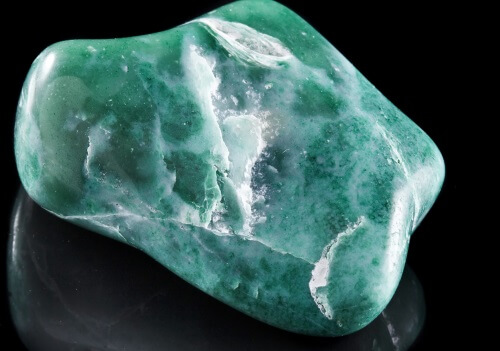
Pounamu, also known as greenstone, is a durable, hard stone available in several varieties and found only in the Southern Island of New Zealand. To the Maori people, the stone is highly valuable and plays an important role in their culture. Geologically, Pounamu are nephrite jade, serpentinite or bowenite but the Maori classify them according to their appearance and color.
Pounamu is often used to make charms and ornaments like Hei-tiki pendants as well certain tools like awls, hammer stones, drill points, fishing hooks and lures. Its prestige and value increases as it’s passed on from one generation to another and the most highly prized ones are those with histories that go back several generations. The Maori consider the Pounamu to be a treasure which is therefore protected under the Waitangi Treaty.
In Moana, the famous animated movie that was released in 2016, the heart of Te Fiti was a pounamu stone.
The Sky Tower
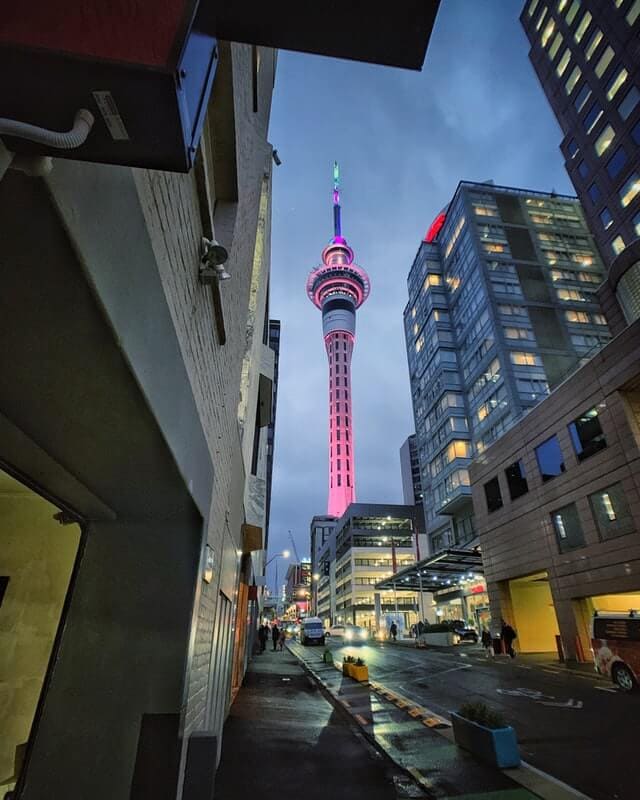
The Sky Tower, located in Victoria, New Zealand is an iconic building due to its unique design and height of 328 metres, making it the 27th tallest tower in the world. The tower is used for broadcasting, telecommunications and observation and it also contains the only revolving restaurant in the country.
The Sky Tower is lit by SkyCity Auckland for every special event as a way of showing support for various charities and organizations or as a symbol of solidarity and respect. For each event, it’s lit up in either a single color or a combination of various colors. For example, red is for ANZAC Day, blue and orange for Easter and red and white for Maori Language Week.
As the tallest building in New Zealand, the Sky Tower is famous for being the defining landmark of the biggest city in the country.
Koru
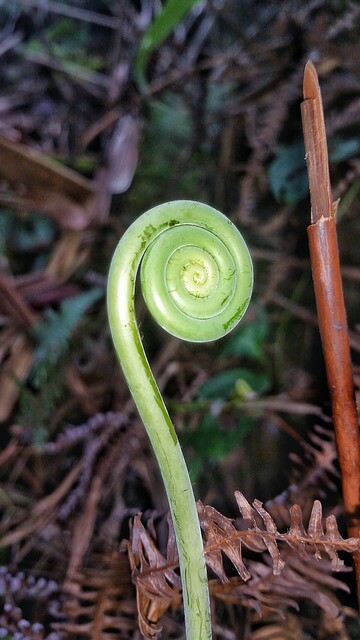
Koru, meaning ‘coil or loop’ in Maori, is a spiral-like shaped similar to the appearance of a silver fern frond as it unfurls for the first time. Koru is an important symbol used in Maori carving, art and tattooing, where it signifies new life, strength, peace and growth. The shape of Koru expresses the idea of eternal movement whereas the coil on the inner side suggests staying connected or going back to the point of origin.
Koru is a famous symbol seen everywhere in the country, including the logo of Air NZ, on tattoos and in art galleries. It’s also often seen depicted in jewelry carved from bone or Pounamu. It’s symbolic of a new phase in one’s relationship, the start of a new relationship, new beginnings and harmony which makes it a popular gift for anyone.
Haka
Haka is an interesting and unique ceremonial dance in Maori culture, performed by a group of people at a time. In the past, it was commonly associated with battle preparations of the male warriors, but it has been performed throughout history by both men and women.
Haka consists of vigorous movements, rhythmic shouting and stamping of the feet and it’s still performed at funerals, special occasions or as a way of welcoming distinguished guests.
The Haka is now widely known around the world since many of New Zealand’s sports teams perform it before international matches, a tradition that began as early as 1888. However, some Maori leaders see it as inappropriate and disrespecting of their culture to perform it at such occasions.
Hobbiton Movie Set

The Hobbiton Movie Set in Matamata, Waikato has become a mecca for lovers of Tolkien. This is where much of the Lord of the Rings movies were filmed. The set is located on a family run farm, made up of sprawling hills and fields – so beautiful that you’re immediately transported out of this world and into Middle Earth. The set was built to last permanently and is now a famous tourist center, with guided tours over the 14 acres starting in 2002. The Shire’s Rest Café provides refreshments including ‘Second Breakfast’.
Mitre Peak
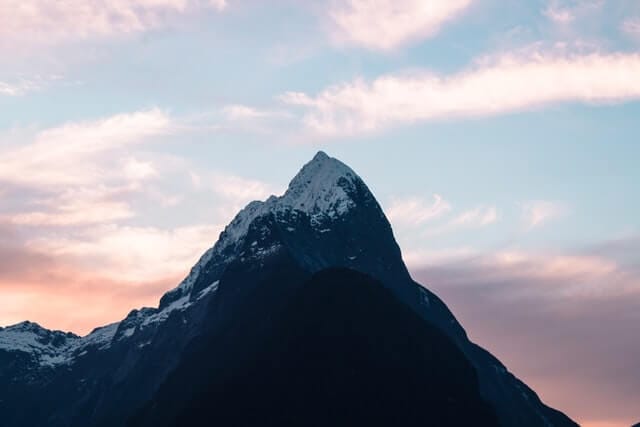
Mitre Peak, also known as Maori Rahotu, is an iconic landmark in southern New Zealand which gained its status due to its location and stunning sight. It was named ‘Mitre’ by Captain John Lort Stokes who thought that the shape of the peak looked similar to the ‘mitre’ headgear worn by Christian bishops. The word ‘Rahotu’ means peak in Maori.
The peak is the most vertical one out of five closely grouped peaks and has proved to be next to impossible to climb with a height of roughly 5,560 feet. While the route itself is fairly easy, the main issue is that it’s exposed and there’s real potential of falling down all the way to the bottom to one’s death.
Although Mitre Peak isn’t the highest peak in New Zealand, it’s definitely one of the most popular tourist destinations in the country, attracting millions of tourists each year.
Wrapping Up
New Zealand’s symbols are diverse, from animals to natural landscapes, to dances and flags. This reflects the natural diversity found within the country and the respect that the people have for their culture and heritage.















![Toni Kroos là ai? [ sự thật về tiểu sử đầy đủ Toni Kroos ]](https://evbn.org/wp-content/uploads/New-Project-6635-1671934592.jpg)


